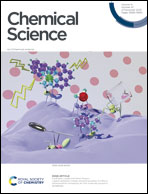Chemoselective bond activation by unidirectional and asynchronous PCET using ketone photoredox catalysts†
Abstract
The triplet excited states of ketones are found to effect selective H-atom abstraction from strong amide N–H bonds in the presence of weaker C–H bonds through a proton-coupled electron transfer (PCET) pathway. This chemoselectivity, which results from differences in ionization energies (IEs) between functional groups rather than bond dissociation energies (BDEs) arises from the asynchronicity between electron and proton transfer in the PCET process. We show how this strategy may be leveraged to achieve the intramolecular anti-Markovnikov hydroamidation of alkenes to form lactams using camphorquinone as an inexpensive and sustainable photocatalyst.



 Please wait while we load your content...
Please wait while we load your content...